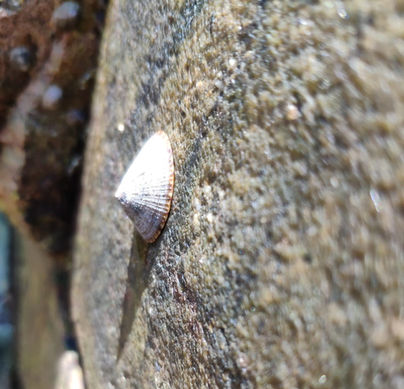Behaviour
Understanding how organisms behave is a fundamental aspect of ecology and this is especially true in the intertidal zone. Physical conditions on rocky shores vary greatly with the tidal and seasonal cycles; driving organisms to partition their vital activities, such as feeding and mating, to maximize their fitness. We investigate these temporal patterns and compare them against theoretical expectations to understand the strategies intertidal species make to maximize their fitness.
Sexual selection
-
Contrasting reproductive and mate choice strategies among species
Thermoregulation
-
Flight & fight behaviours to mitigate thermal stress, and their trade-offs for other activities such as foraging
Optimal foraging
-
Spatio-temporal partitioning in foraging patterns to optimally acquire energy in the highly dynamic intertidal zone
Thermal Ecology
In the tropics, intertidal organisms regularly face rock temperatures over 50 °C and sometimes > 60 °C for varying periods depending on their tidal height. Our research aims to understand how they can manage to survive these extremes by determining the behavioural, physiological and energetic strategies they employ; the associated costs of these choices and how they will impact the subsequent success and future distribution of these organisms.
Acclimation/adaptation & Biogeography
-
Species responses to recent & long-term thermal history and their consequences on species geographic distribution
Environmental variability
-
Measurements of environmental changes at the organismal scale, and how predictable these changes are to inform survival strategies
Physiology
-
Potential thermal niche of species measured using physiological tolerances
Species Interactions
Whilst physical conditions play a dominant role in tropical intertidal systems, species’ interactions remain key factors influencing survival and community dynamics. We specifically work on the seasonal impacts of Hong Kong’s monsoon system on consumer:prey interactions, with a particular emphasis on the impacts of herbivores on cyanobacteria and algae; and the seasonal importance of sessile facilitators (oysters and mussels) for these mobile grazers.
Trophic relationships
-
Spatio-temporal patterns of energy flows & top-down bottom-up processes
Facilitation
-
Ecoengineering species and their ameliorations against thermal stress
Biofilms
-
Species composition, energy and nutrient contents of biofilms
Our Model Organisms
Whilst a great deal of information is available for temperate species, relatively little is known about the ecology of tropical intertidal species. Much of our earlier work was directed to understand the autoecology of individuals species; and from this our work has focused on a number of rocky shore molluscs, such as limpets, littorinids, oysters, mussels etc. (and even sometime straying into crabs …) which are ideal organisms to study and, using a variety of field and laboratory approaches, we investigate the patterns and processes underlying species persistence in the stressful, energy-limited and dynamic tropical rocky shores.
Current Research
Our research group has an overarching focus on the thermal ecology of tropical high shore species, which include the thermal physiology of a tropical oyster, Isognomon nucleus, across its latitudinal ranges; littorinid thermal ecology and sexual selection, and the ecophysiology of high shore limpets such as Cellana grata and Lottia dorsuosa in Hong Kong. We are also investigating the thermal ecology & sexual selection of Nerita yoldii, a species expanding rapidly along the Chinese coast, dynamic energy budgets of two commercially important bivalves, as well as the relationships between behaviour and physiology in species with different mobility.

Future Directions
We are interested to expand our research directions to further understand tropical intertidal ecology, which include, but are not limited to, community ecology along tropical shores with contrasting environments, biophysical ecology of tropical molluscs, and facilitation effects by ecoengineering species such as oysters and mussels. But if you have any other ideas, please don’t hesitate to contact us!






























